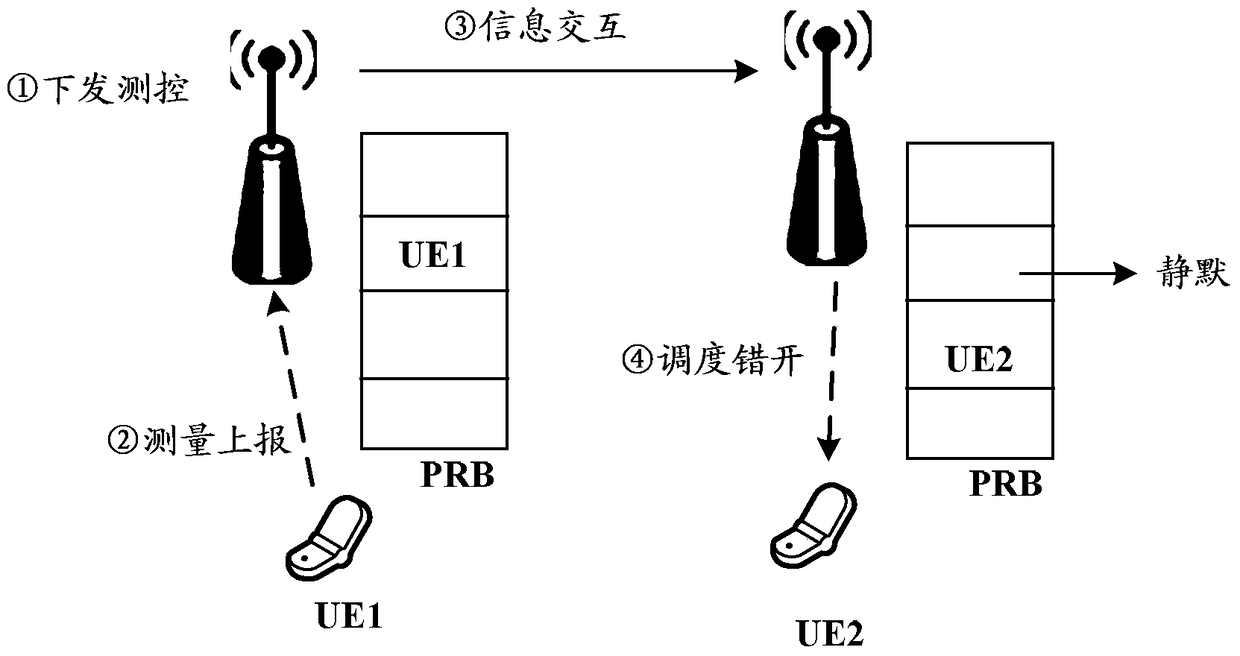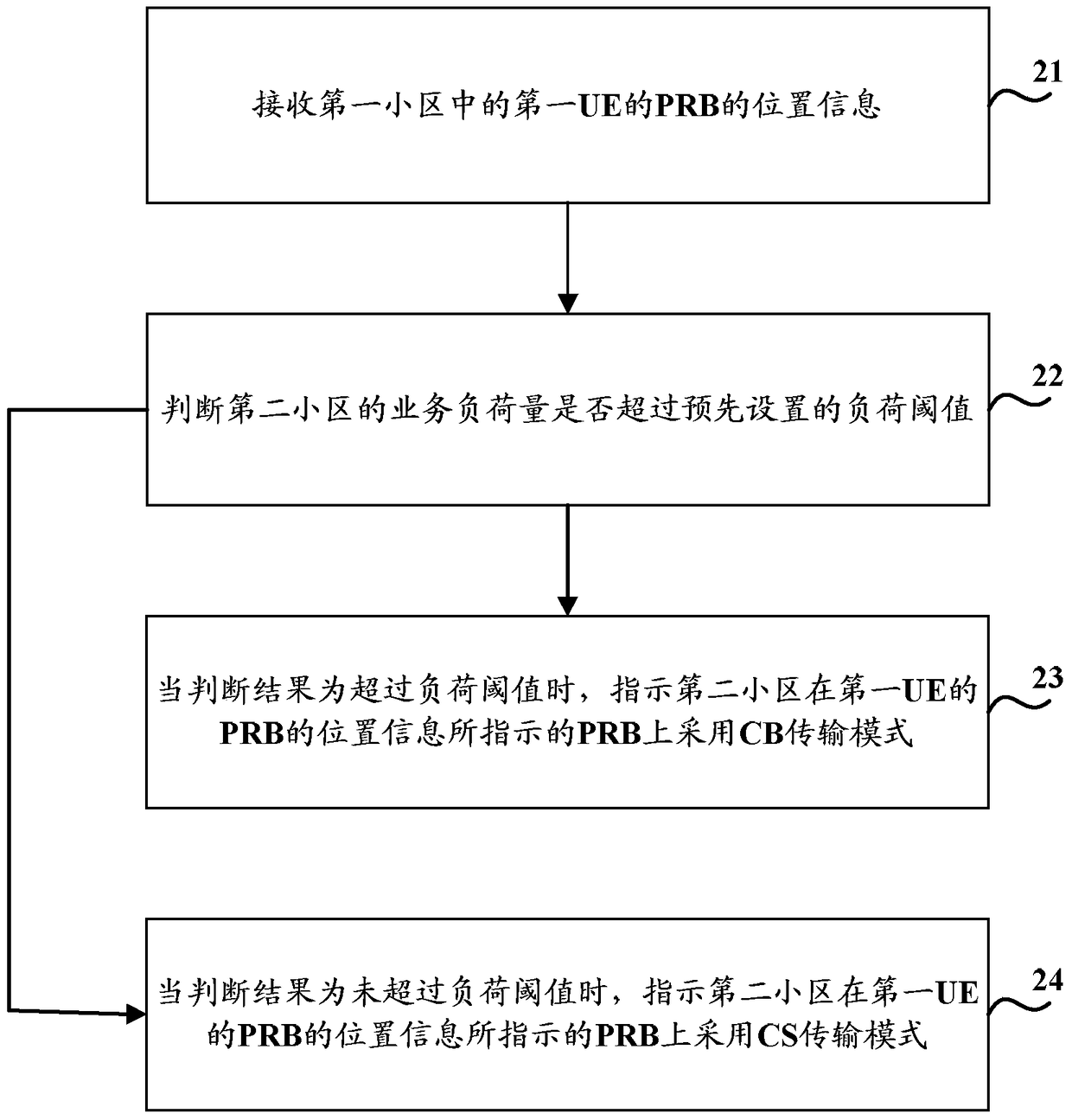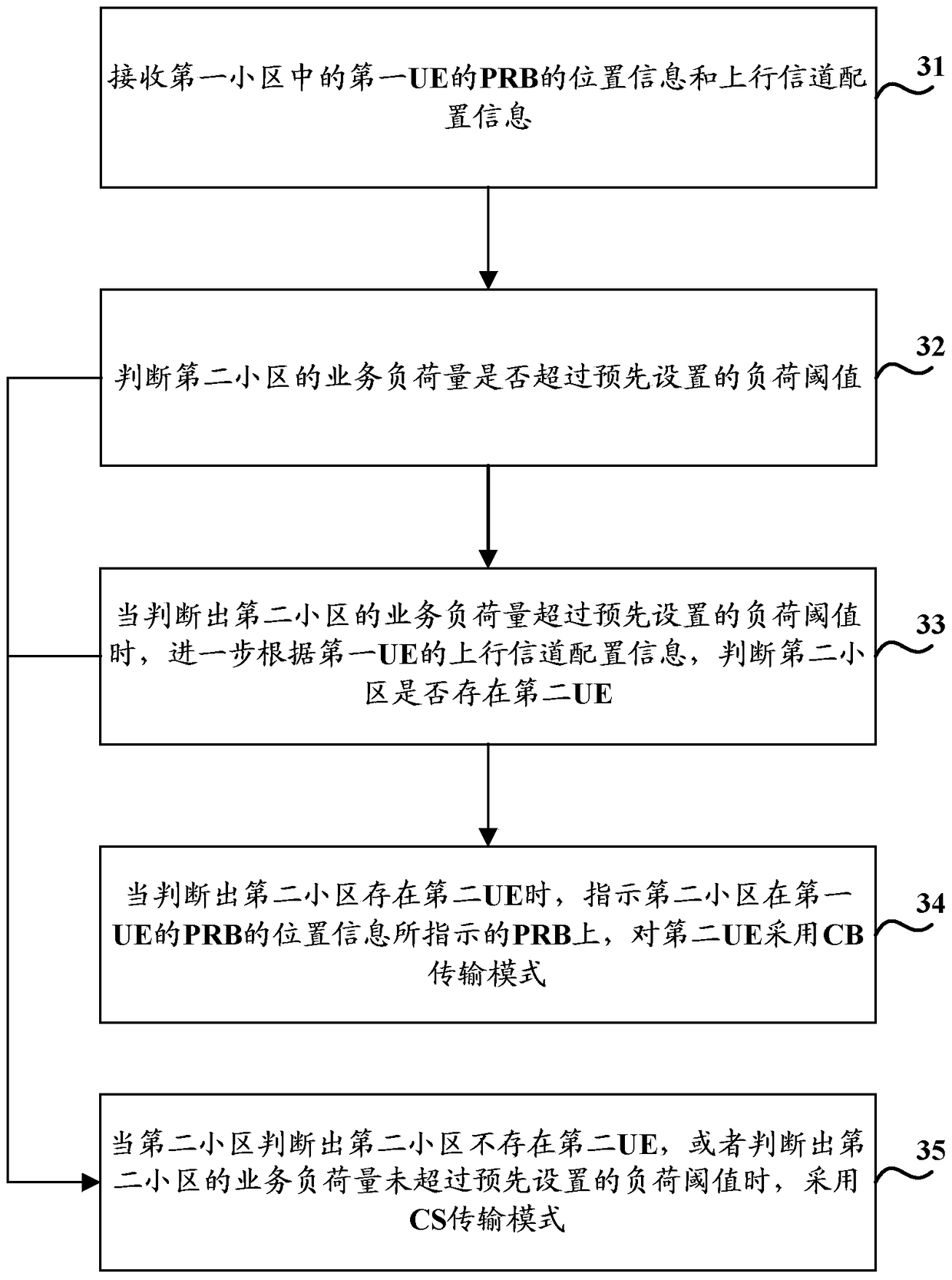A method and device for inter-cell cooperation
An inter-cell and cell-to-cell technology, applied in wireless communication, network traffic/resource management, electrical components, etc., can solve the problems of PRB reduction and low cell throughput, so as to avoid reduction, ensure throughput, and realize cooperation between cells Effect
- Summary
- Abstract
- Description
- Claims
- Application Information
AI Technical Summary
Problems solved by technology
Method used
Image
Examples
Embodiment Construction
[0062] In order to solve the problem in the prior art that the throughput of the cell is low due to the reduction in the number of available PRBs, the embodiment of the present invention conducts an in-depth study on the existing cooperation scheme, and finds that the CS scheme, namely The CS transmission mode is suitable for application scenarios where the service load of the entire network does not reach 100%, that is, for a certain cell, when it is silent on a part of PRBs and the remaining PRBs are sufficient for its use, the existing CS transmission mode is convenient. can apply. Based on the above research, an embodiment of the present application proposes an inter-cell cooperation scheme. In this technical solution, after receiving the location information of the first UE in the first cell, adaptively select the cooperation mode of the second cell by judging whether the traffic load of the second cell exceeds a preset load threshold. On the one hand, when the judgment ...
PUM
 Login to View More
Login to View More Abstract
Description
Claims
Application Information
 Login to View More
Login to View More - R&D
- Intellectual Property
- Life Sciences
- Materials
- Tech Scout
- Unparalleled Data Quality
- Higher Quality Content
- 60% Fewer Hallucinations
Browse by: Latest US Patents, China's latest patents, Technical Efficacy Thesaurus, Application Domain, Technology Topic, Popular Technical Reports.
© 2025 PatSnap. All rights reserved.Legal|Privacy policy|Modern Slavery Act Transparency Statement|Sitemap|About US| Contact US: help@patsnap.com



